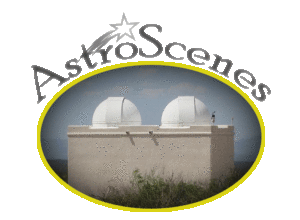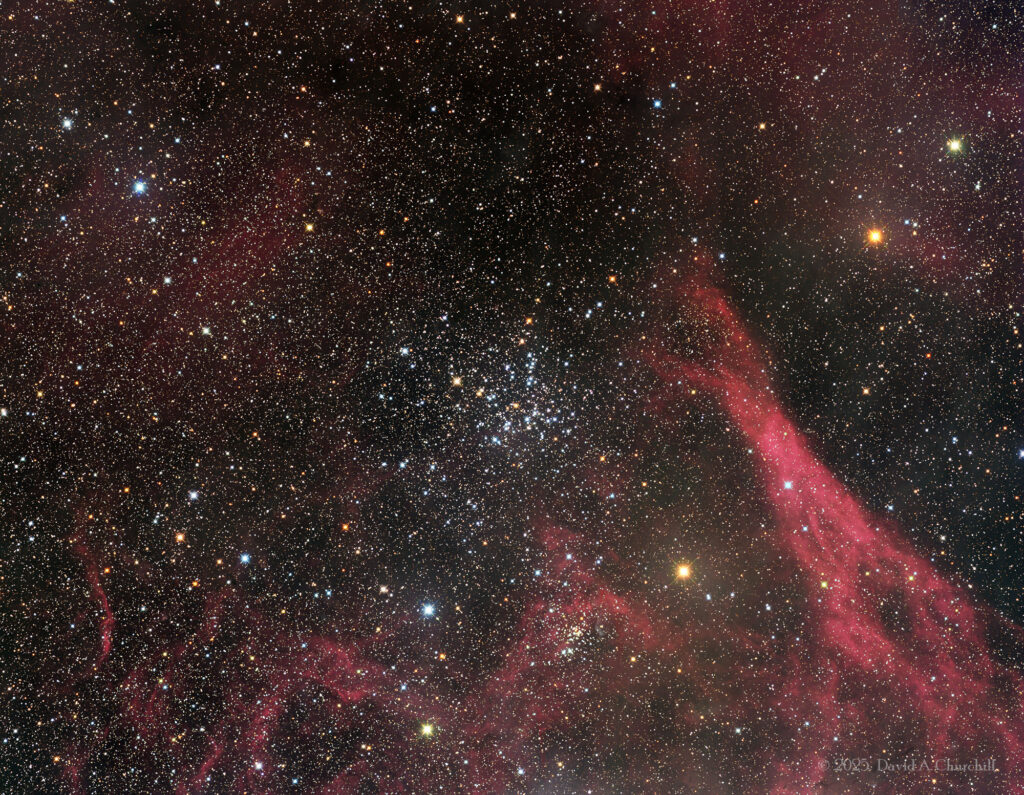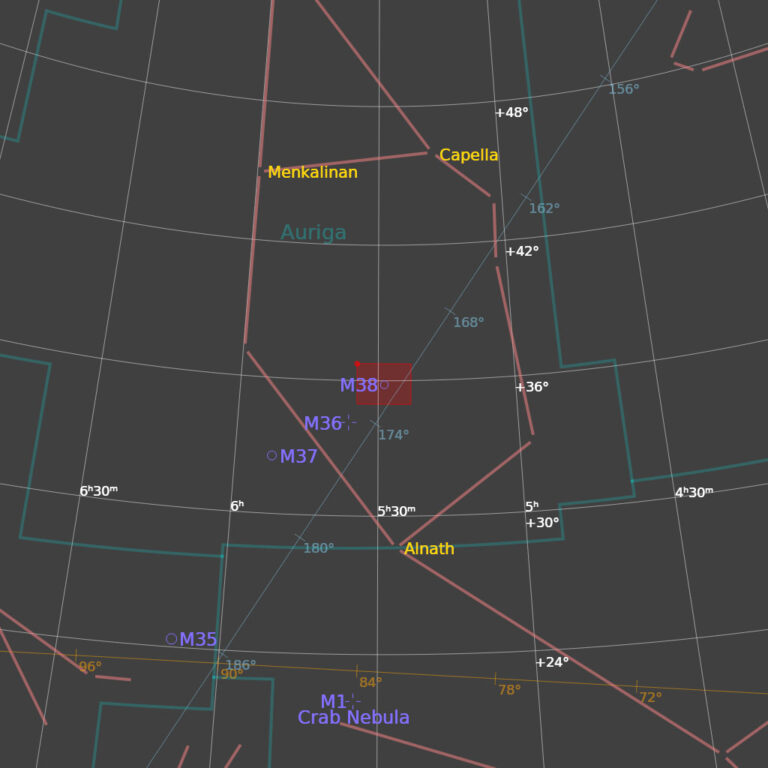Messier 38
Starfish Cluster. Open Cluster, Auriga
October 2025. Cave Creek Canyon Observatory, Arizona Sky Village
- Description
- Technical
- Links
Messier 38 or M38, also known as NGC 1912 or Starfish Cluster, is an open cluster of stars in the constellation of Auriga. It was discovered by Giovanni Batista Hodierna before 1654 and independently found by Guillaume Le Gentil in 1749. The open clusters M36 and M37, also discovered by Hodierna, are often grouped together with M38. Distance is about 1.066 kpc (3,480 ly) away from Earth. The open cluster NGC 1907 lies nearby on the sky, but the two are most likely just experiencing a fly-by, having originated in different parts of the galaxy.
The cluster’s brightest stars form a pattern resembling the Greek letter Pi or, according to Webb, an “oblique cross”. At its distance of 1066 pc., its angular diameter of about 20 arc minutes corresponds to about 4.0 parsecs (13 light years), similar to that of its more distant neighbor M37. It is of intermediate age at about 290 million years. From the population of about 100 stars, this open cluster features a prominent yellow giant with the apparent magnitude +7.9 and spectral type G0 as its brightest member. This corresponds to an absolute magnitude of -1.5, or a luminosity of 900 Suns. For comparison, the Sun would appear as a faint magnitude +15.3 star from the distance of M38.
The cluster’s brightest stars form a pattern resembling the Greek letter Pi or, according to Webb, an “oblique cross”. At its distance of 1066 pc., its angular diameter of about 20 arc minutes corresponds to about 4.0 parsecs (13 light years), similar to that of its more distant neighbor M37. It is of intermediate age at about 290 million years. From the population of about 100 stars, this open cluster features a prominent yellow giant with the apparent magnitude +7.9 and spectral type G0 as its brightest member. This corresponds to an absolute magnitude of -1.5, or a luminosity of 900 Suns. For comparison, the Sun would appear as a faint magnitude +15.3 star from the distance of M38.
Telescope: Planewave Delta Rho 350 f3.0
Mount: Astro Physics 3600GTO “El Capitan”
Camera: ZWO ASI461MM pro / EFW-7
Guider: ZWO OAG-L-68 / ZWO ASI174mm Mini
Filters: Astrodon II 50mm Sq LRGB
L: 88×5 mins = 440 mins, R: 24×5 mins = 120 mins, G: 25×5 mins = 125 mins, B: 24×5 mins = 120 mins
Total Imaging Time: 13h 25m
Data Imaged remotely on 4 nights during October, 2025.
Data acquisition & Processing by David Churchill.
None


